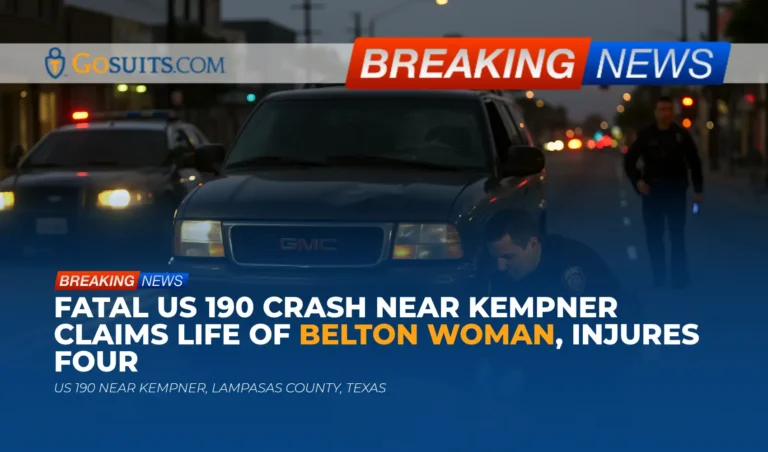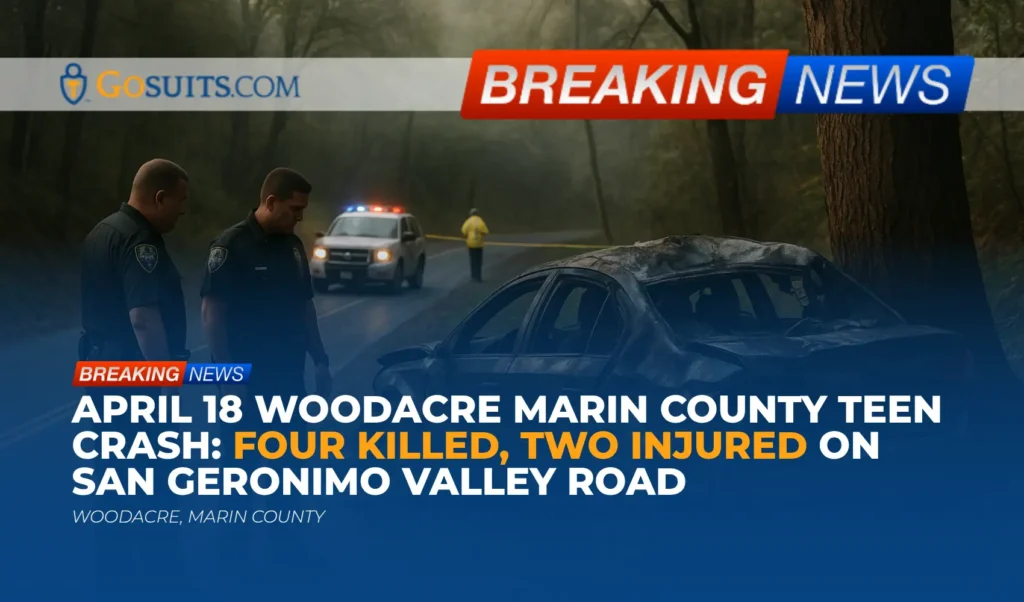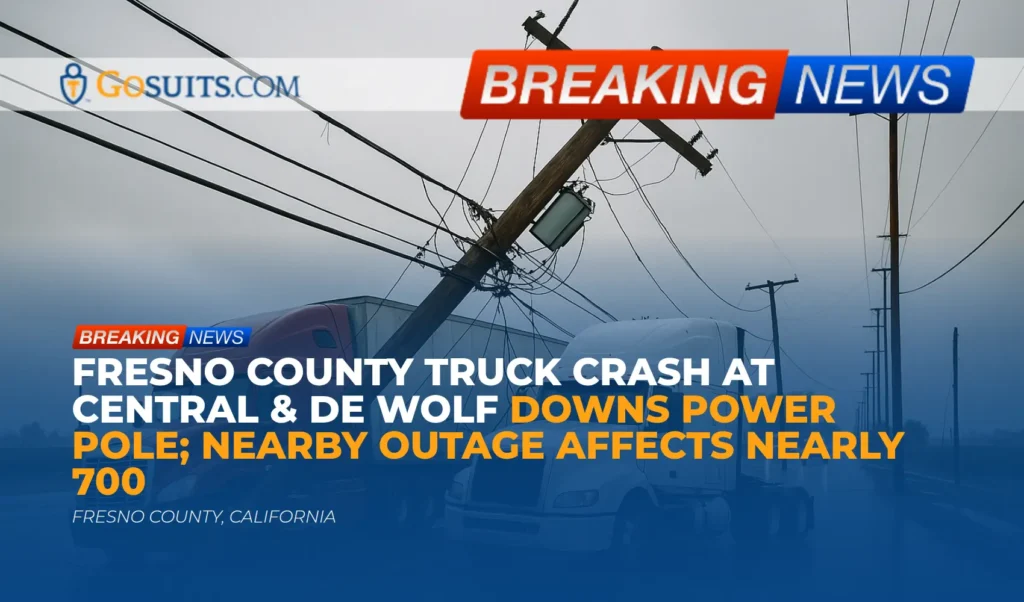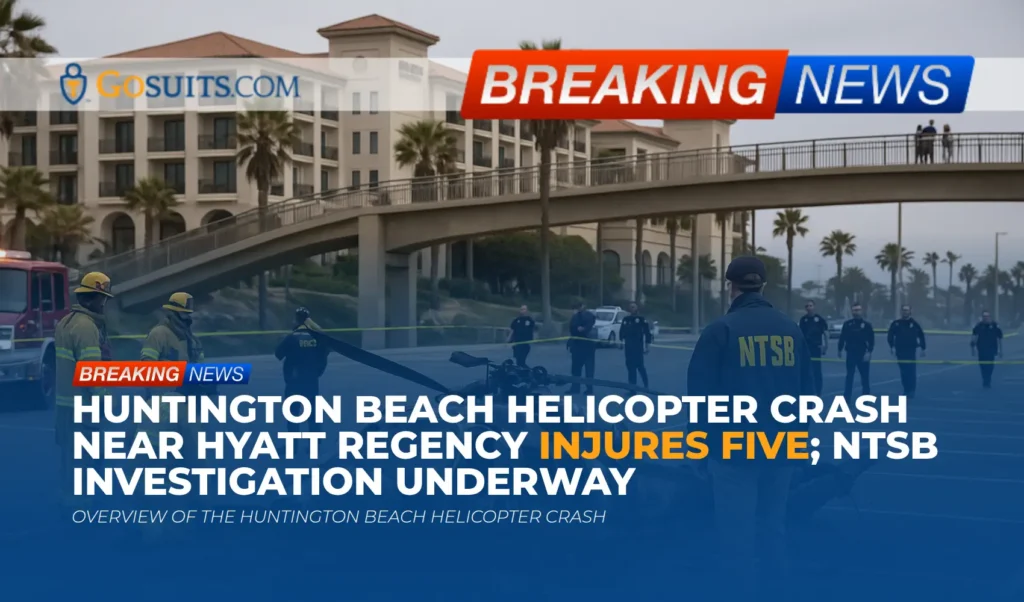- Overview of the US 190 crash near Kempner
- What is known so far
- Safety and Texas law: turns, shoulders, and right-of-way
- Potential civil liability and insurance considerations
- Which reports and records to request, and where to get them
- How a Texas highway crash investigation typically proceeds
- Special considerations when children are seriously injured
- Preserving evidence and avoiding common pitfalls
- Commentary from Gosuits Kempner, Texas Personal Injury Attorney
- Why timely action matters and what steps to take
Overview of the US 190 crash near Kempner
A two-vehicle collision on US 190 in Lampasas County took the life of a 51-year-old Belton woman on Sunday morning. The crash occurred around 9:59 a.m. near mile marker 546, just outside Kempner. According to the Texas Department of Public Safety, a 2010 Ford Edge was struck on the driver’s side by a 2008 Ford Explorer traveling westbound. The driver of the Edge, identified publicly as Malena Mick, was pronounced deceased at the scene. Two 13-year-old passengers in the Edge were airlifted with serious injuries to a Temple children’s hospital. The 65-year-old driver of the Explorer and a 65-year-old passenger were transported by ambulance to a Killeen hospital with serious injuries. Authorities have notified next of kin.
In the immediate aftermath of a crash this severe, families and community members often seek clear information about what happened, what the law says about similar situations, and what practical steps can help protect their rights. The sections below provide a careful summary of the reported facts alongside general legal and safety context under Texas law, plus guidance on the kinds of records to request and how an investigation typically moves forward.
What is known so far
Location and time
The incident happened on US 190 at mile marker 546 near Kempner in Lampasas County, Texas, at approximately 9:59 a.m. on a Sunday morning.
Vehicles and people involved
Authorities reported the crash involved a 2010 Ford Edge and a 2008 Ford Explorer. The Edge had been stopped on the westbound shoulder of the highway. The Explorer, driven by a 65-year-old man from Copperas Cove, was traveling westbound. When the Edge attempted a U-turn to head eastbound, it entered the path of the oncoming Explorer, which struck the Edge on the driver’s side.
The Edge’s driver, a 51-year-old Belton woman, died at the scene. Two 13-year-old passengers in the Edge, a boy and a girl, sustained serious injuries and were airlifted for emergency care. The Explorer’s driver and a 65-year-old passenger were taken by ambulance to a Killeen hospital, also with serious injuries.
Agency involvement
The Texas Department of Public Safety (DPS) is the investigating law enforcement agency. DPS reported that next of kin were notified.
What remains under investigation
Details that often remain under investigation in crashes like this include visibility and sight distance at the scene, the precise positions and speeds of both vehicles, whether turn signals were used, whether there were any vehicle defects, and whether fatigue, distraction, or other factors were present. Official findings are typically documented in the law enforcement crash report and any supplemental reconstruction.
Safety and Texas law: turns, shoulders, and right-of-way
Texas road rules prioritize predictable movements and yielding when crossing the path of oncoming traffic. While every crash involves unique facts, several parts of the Texas Transportation Code often become relevant in a scenario where a vehicle moves from a shoulder area to turn and is struck by traffic approaching from behind or from the opposite direction. The citations below are provided for general information.
Using the improved shoulder
Under Texas Transportation Code Section 545.058, a driver may drive on an improved shoulder only for limited purposes and only when it can be done safely. This includes stopping or decelerating when necessary and reentering the main lane only when safe. See Texas Transportation Code Section 545.058 for the full text: statutes.capitol.texas.gov/Docs/TN/htm/TN.545.htm#545.058.
Making turns and U-turns safely
Texas law requires drivers to ensure that a turn can be made safely and with appropriate signaling. Two provisions often discussed are:
- Turning on a curve or crest of a grade: Section 545.102 prohibits a U-turn on a curve or near the crest of a hill if the vehicle cannot be seen by other drivers from 500 feet. See Section 545.102: statutes.capitol.texas.gov/Docs/TN/htm/TN.545.htm#545.102.
- Left-turn yielding: Section 545.152 requires a driver turning left to yield the right-of-way to oncoming vehicles that are in the intersection or so close as to be a hazard. While a U-turn is not exactly the same as a left turn, similar safety principles of yielding to oncoming traffic apply. See Section 545.152: statutes.capitol.texas.gov/Docs/TN/htm/TN.545.htm#545.152.
Drivers must also signal any turn or lane change continuously for at least 100 feet when practical. See Texas Transportation Code Section 545.104: statutes.capitol.texas.gov/Docs/TN/htm/TN.545.htm#545.104.
Crash reporting and access to records
Officers who investigate a crash that results in injury, death, or property damage exceeding the statutory threshold must submit a written report. See Texas Transportation Code Section 550.064: statutes.capitol.texas.gov/Docs/TN/htm/TN.550.htm#550.064. Access to crash reports is governed by Section 550.065, which outlines who may obtain copies and how they are released: statutes.capitol.texas.gov/Docs/TN/htm/TN.550.htm#550.065.
Potential civil liability and insurance considerations
Determining civil fault is a fact-intensive process. Investigators and insurers typically consider visibility, right-of-way, signaling, position on the roadway, dash camera or surveillance footage, physical evidence on the pavement, event data recorders (if available), and consistent witness accounts.
Proportionate responsibility
Texas applies proportionate responsibility in most negligence claims. In plain terms, more than one party may share fault, and any compensation can be reduced by a person’s percentage of responsibility. If a claimant is found to be more than 50 percent responsible, recovery can be barred. See Texas Civil Practice and Remedies Code Chapter 33: statutes.capitol.texas.gov/Docs/CP/htm/CP.33.htm.
Wrongful death and survival claims
When a fatality occurs, Texas law allows certain family members to bring a wrongful death claim, and the decedent’s estate may bring a survival claim for damages the decedent sustained prior to passing. Eligibility and damages depend on specific facts. See Texas Civil Practice and Remedies Code Chapter 71 (including Section 71.021, the survival statute): statutes.capitol.texas.gov/Docs/CP/htm/CP.71.htm.

Statute of limitations
Most Texas personal injury and wrongful death claims have a two-year statute of limitations from the date of the incident, although there are exceptions that can shorten or extend deadlines in particular circumstances. See Texas Civil Practice and Remedies Code Section 16.003: statutes.capitol.texas.gov/Docs/CP/htm/CP.16.htm#16.003. Because deadlines can be complex, it is important to understand applicable timelines early.
Insurance dynamics after a serious crash
Multiple insurers may be involved: liability coverage for each driver, potential underinsured motorist coverage, and medical payments or personal injury protection on applicable policies. Insurers commonly request recorded statements and broad medical authorizations. Statements given before the facts are clear can be used later to dispute or minimize claims. Speaking with a seasoned attorney before communicating with insurance adjusters can help ensure rights are protected and that only necessary information is provided.
Which reports and records to request, and where to get them
Collecting official records early helps clarify what happened and preserves crucial evidence. Agencies below are listed for general guidance; specific office names and contact methods can vary by county and region.
Law enforcement crash report and supplemental documents
- Investigating agency: Texas Department of Public Safety (Highway Patrol). The officer’s crash report, diagrams, and any supplemental narratives are typically submitted to the state crash records system. Access to crash reports is governed by Texas Transportation Code Section 550.065 (statutes.capitol.texas.gov/Docs/TN/htm/TN.550.htm#550.065).
- How to request: Crash reports can usually be requested online through the State of Texas crash records system referenced by TxDOT or directly from DPS per applicable procedures. When searching, have the date, location (US 190 near Kempner, Lampasas County), and names of involved parties ready.
- Other items to ask about: Officer’s photos, field sketches, measurements, any dash-cam or body-cam recordings, and any available 911 CAD notes. Some items may be subject to the Texas Public Information Act and specific exemptions (see Texas Government Code Chapter 552: statutes.capitol.texas.gov/Docs/GV/htm/GV.552.htm).
Inquest, autopsy, and death certification
- Who handles the inquest: In many Texas counties without a medical examiner’s office, a Justice of the Peace conducts inquests into certain deaths, including fatal crashes. See Texas Code of Criminal Procedure Chapter 49: statutes.capitol.texas.gov/Docs/CR/htm/CR.49.htm.
- What to request: Inquest record, autopsy report if performed, and death certificate. Availability and timing vary, especially if toxicology is pending. Ask the county Justice of the Peace office responsible for the scene location (Lampasas County) how to request copies.
- Why it matters: These documents can clarify cause and manner of death and may be needed for probate, insurance, and potential civil claims.
Emergency medical services and hospital records
- EMS run sheets and records: The ambulance provider’s records can document vital signs, injuries observed, and care provided at the scene and en route.
- Hospital records and imaging: Emergency department records, imaging, surgical reports, and discharge summaries detail the extent of injuries.
- How to request: Medical records are protected by privacy laws. A personal representative or legal guardian may request records with proper authorization. See the U.S. Department of Health and Human Services guidance on the HIPAA right of access: hhs.gov/hipaa/for-professionals/privacy/guidance/access.
911 audio and dispatch logs
- What to ask for: 911 call audio, Computer-Aided Dispatch (CAD) logs, and incident time stamps. These can help establish timelines and corroborate witness accounts.
- How to request: Requests are typically made to the county or regional communications center under the Texas Public Information Act (Texas Government Code Chapter 552: statutes.capitol.texas.gov/Docs/GV/htm/GV.552.htm).
Towing, impound, and vehicle data
- Tow and storage records: The tow ticket notes vehicle condition, location, and chain of custody.
- Event Data Recorder (EDR) downloads: Many vehicles store pre-crash speed, braking, and seatbelt data. Prompt preservation is critical. Accessing EDR data usually requires owner authority, a court order, or consent.
- Preservation notice: Consider sending written preservation letters to the tow yard and any involved insurers to prevent spoliation.
Who to call first
- Texas DPS Highway Patrol (investigating agency): Ask for the crash report number, the investigating trooper’s name, and the expected timeline for the report and any supplements.
- Lampasas County Justice of the Peace Office: Confirm which JP conducted the inquest for a fatal crash on US 190 near Kempner and how to obtain inquest or autopsy records.
- EMS provider and receiving hospitals: Inquire about the process to request patient records with proper authorizations.
How a Texas highway crash investigation typically proceeds
After a fatal or serious-injury crash on a state highway, DPS troopers document the scene, secure any immediate hazards, and begin evidence collection. The process usually includes:
- Scene documentation: Photographs, measurements, roadway markings, debris fields, final rest positions, yaw marks or skid marks, and visibility considerations like curves and sight distances.
- Vehicle inspection: Checking for mechanical issues, airbag deployments, and damage patterns consistent with the point of impact identified in statements and physical evidence.
- Witness interviews: Statements from drivers, passengers, and bystanders. Inconsistencies are noted for later review.
- Data and recordings: Dash camera and body camera footage if available, 911 audio, and potential nearby business or traffic cameras.
- Supplemental reconstruction: For complex crashes, DPS may perform additional reconstruction to estimate speeds and pre-impact trajectories.
The initial crash report may be available within days or weeks, while full supplemental analyses can take longer. Families often find it helpful to keep a simple timeline of when records are requested and received, and to maintain a folder for reports, medical documentation, and correspondence.
Special considerations when children are seriously injured
Crashes involving children raise additional medical, educational, and legal questions. Beyond emergency care, children may need ongoing treatment, counseling, and support in school. Documenting how injuries affect daily activities can be as important as tracking medical visits.
- Medical follow-up: Keep consistent pediatric and specialist follow-ups and retain all medical records and imaging. Ask providers to explain long-term care plans and any needed accommodations at school.
- Authorizations and privacy: A parent or legal guardian generally controls access to a minor’s medical records. Use written authorizations, and request certified copies when appropriate. See HIPAA right of access guidance from HHS: hhs.gov/hipaa/for-professionals/privacy/guidance/access.
- Insurance coordination: Health insurance, auto medical benefits, and any third-party liability coverage may all be involved. Coordination helps avoid gaps and duplicate billing.
- Documentation of impact: Keep a journal of symptoms, missed activities, and any counseling or therapy. This helps providers understand progress and challenges over time.

Preserving evidence and avoiding common pitfalls
In the days and weeks after a serious crash, a few careful steps can protect the integrity of the facts and reduce avoidable disputes later.
- Preserve vehicles and data: If possible, avoid authorizing destruction or salvage before an inspection and any necessary downloads of vehicle event data. Send written preservation requests to tow yards and insurers.
- Collect photos and witness information: If safe to do so, gather names, contact details, and any photos or videos from witnesses. Store files with date and time stamps.
- Be cautious with insurance communications: Insurance adjusters often seek recorded statements early. What is said can be used in later evaluations. Consider consulting an attorney before making statements or signing medical authorizations, and provide only necessary information.
- Track all expenses: Keep receipts for medical bills, transportation, home accommodations, and other crash-related costs. Maintain a log of time missed from work or school.
- Mind the deadlines: Texas has filing deadlines that can be as short as two years for injury and wrongful death claims, and some notices or claims processes have earlier trigger dates. See Texas Civil Practice and Remedies Code Section 16.003: statutes.capitol.texas.gov/Docs/CP/htm/CP.16.htm#16.003.
Commentary from Gosuits Kempner, Texas Personal Injury Attorney
Our hearts are with everyone affected by the devastating crash on US 190 near Kempner. The loss of life and the serious injuries reported are deeply saddening. This commentary is intended for general educational purposes to help the community understand how cases like this are typically evaluated and what steps can help protect rights and well-being.
Based on publicly reported information, investigators will be examining how and when the Ford Edge moved from the shoulder into the roadway, whether the U-turn could be made safely under the conditions at that location, the visibility for oncoming westbound traffic on US 190, and whether proper signaling and yielding occurred. They will also look for independent corroboration from physical evidence, witness accounts, and potential video or vehicle data. These details matter because Texas law emphasizes the responsibility to ensure safety before turning and to yield to oncoming traffic that is so close as to present a hazard. See Transportation Code Sections 545.102, 545.104, and 545.152: 545.102, 545.104, and 545.152.
In the aftermath of severe collisions, insurance companies and large entities may move quickly to obtain statements, authorizations, and documents, sometimes before the full picture is known. This can put injured people and grieving families at a disadvantage: early statements can be taken out of context, broad medical authorizations can open unrelated history to scrutiny, and quick settlements may not account for long-term needs, especially in cases involving serious injuries to children. Understanding proportionate responsibility and the evidence that shapes fault determinations is essential. See Texas Civil Practice and Remedies Code Chapter 33 for proportionate responsibility: statutes.capitol.texas.gov/Docs/CP/htm/CP.33.htm.
A free consultation with a skilled personal injury attorney can help clarify rights, outline the records to request, and provide guidance on communications with insurers. It also allows families to better understand timelines, such as Texas’s general two-year statute of limitations for injury and wrongful death claims. See Civil Practice and Remedies Code Section 16.003: statutes.capitol.texas.gov/Docs/CP/htm/CP.16.htm#16.003. While no discussion can undo the harm, informed decisions can make a meaningful difference in navigating the road ahead.
Why timely action matters and what steps to take
When crashes cause a fatality or serious injury, important information can be lost if not preserved promptly. Taking organized steps helps ensure facts are documented, deadlines are met, and families have what they need to make informed decisions. The points below explain what to do, why it matters, and the urgency behind each step.
- Request the official crash report and related materials: Obtain the DPS crash report, any supplemental diagrams or narratives, and ask about dash-cam or body-cam video availability. These documents anchor the timeline and provide the factual backbone for insurance claims. Early requests help keep the process moving while memories are fresh.
- Identify the inquest authority and ask about autopsy records: Confirm the Justice of the Peace who handled the inquest for the US 190 crash near Kempner, and ask about the process to request the inquest record and autopsy report if one was performed. These records can take weeks depending on toxicology; starting early avoids later delays and is important for insurance, benefits, and potential civil claims.
- Secure EMS and hospital documentation: Ask the EMS provider and receiving hospitals about their records request procedures. Use proper authorizations and keep copies. Timely medical documentation supports appropriate care plans and helps establish the nature and extent of injuries.
- Preserve vehicles for inspection and data downloads: Send written notices to the tow yard and any insurers asking that the vehicles not be altered or destroyed until inspections and event data recorder downloads can occur. Vehicle data can be overwritten or lost if a vehicle is moved or salvaged; preservation is time-sensitive.
- Collect witness information and any available video: Identify witnesses and nearby businesses or homes that may have exterior cameras. Many systems overwrite footage in days. A prompt, polite request improves the chance of capturing valuable video.
- Coordinate insurance wisely: Notify applicable insurers of the crash to preserve benefits, but consider speaking with an attorney first. What is said to an insurance company can be used later, and early recorded statements may not reflect the full context.
- Keep a centralized record file: Maintain a binder or digital folder with reports, medical records, bills, correspondence, and a timeline of events. This organization reduces stress and helps avoid missed steps and deadlines.
- Be mindful of legal timelines: Texas’s general two-year statute of limitations for injury and wrongful death claims means waiting can jeopardize rights. Some notice requirements and claim processes have even shorter timeframes. Acting now preserves options while evidence is still available.
- Seek a free legal consultation before making key decisions: A brief, no-cost conversation can clarify options, protect communications with insurers, and help plan next steps without pressure. This is especially important when injuries are serious or a fatality is involved.
Taking these steps promptly can help ensure that the truth is carefully documented, critical records are obtained, and decisions are made with a clear understanding of the facts and the law.






